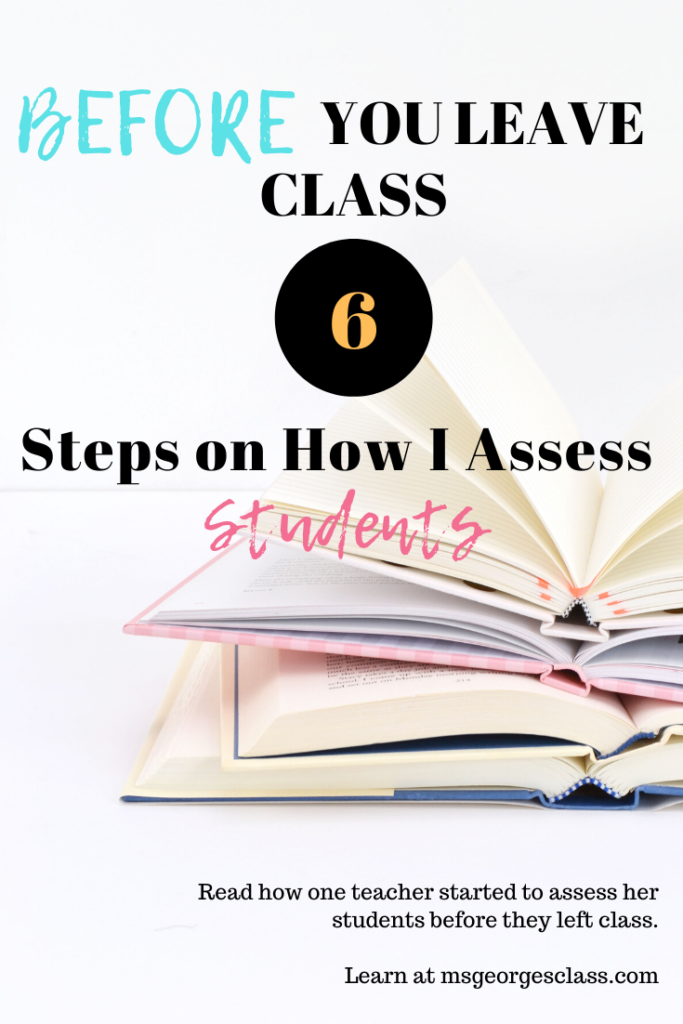
The bell would ring, and I would dismiss students without a clue if they understood the lesson. I would stand in front of the class and teach or lecture most of the fifty minutes, and when the bell rang, I would say, “You’re dismissed.” I was clueless if the students gained the information I wanted them to know. I did not know if they met the objective I posted on the board. I began using sticky notes and having students place a phrase on it and then post it on a board with the colors green, yellow, and red. Green means the student got the lesson, yellow means they somewhat understood the lesson, and red means they did not get the lesson. However, the sticky notes were too small to show understanding, and they were anonymous. I had to change how I assessed my students on the knowledge of the daily lesson.
Robert Marzano discusses the importance of exit slips in his book The New Art and Science of Teaching. Exit slips are given at the end of the class, and students have to respond to a reflective question. They are part of the reflecting on learning and are considered a highly metacognitive activity. According to Marzano, “Teachers can use exit slip to ask questions about the content addressed in class…” (59) and how they would improve their work or compare their knowledge. Within my lessons, I use the objective to write an exit slip. An exit slip may ask students to compare and contrast or analyze the disadvantages and advantages of a text.
At the beginning of the school year, I found exit slips on Teachers Pay Teachers. They are on 8.5 x11 sheets of paper divided into four squares. Each exit slip has six lines for students to write on. I use the customized format and type the objective on the exit slip.

How I Distribute the Formative Assessment
1. My lesson objective is a common core standard written in student-friendly terms. For example, Reading Informational 8.1 is stated as, “I can analyze text to cite textual evidence that is explicitly stated.”
2. I read the lesson objective aloud to the students and tell them that I am looking for them to state textual evidence that is explicitly stated.
3. I create exit slips that state: “Cite two pieces of textual evidence that is explicitly stated and explain why” or it may state: “Cite the strongest piece of text evidence that is explicitly stated.” Students typically struggle with citing the strongest piece of evidence; they want to cite two or more pieces. I’m assuming they want to get the answer right versus deciding which evidence had the strongest claim.
4. In the last eight minutes of class, I begin to pass out the exit slips. Typically, students are finishing their classwork, and they can easily transition from their classwork to the exit slip.
5. Five minutes before the bell rings, I remind students to write their answers on the exit slip. I read the objective again and emphasize the words ‘analyze’ and ‘textual evidence’.
6. One minute before the bell rings, I stand at the door. When the bell rings, I dismiss the students, and one by one, they hand me their exit slip. I get 100% participation.
The slips are small enough to spot grade. I check to see if the student answered the question correctly. If the student cites the textual evidence and analyzes it, they get full credit, which is five points. If they cite the evidence but do not analyze the evidence, they earn four points. If they do not answer correctly, but they reference the article, I give them three points. I use a simple checkmark system; a checkmark with a plus sign means full credit, a checkmark means four points, and a checkmark with a minus sign is three points. I review the students’ exit slips and decide if I need to review the topic the next day. Since I’ve begun using the exit slips, I have witnessed most students earning five points on the exit slips. In my class of 23, I usually have one student that writes one incomplete sentence without textual evidence. I have concluded that the student does not want to put the effort into writing because he can correctly explain his answer.

Even when you have a student that does not want to write their answer on an exit slip, don’t abandon the practice. Encourage your students to write reflectively about the content they learned in your class. This gives a snapshot of what the student knows and assists you in how to plan your lesson. If you notice that the majority of your class is not earning high scores on the exit slips, reteach the lesson the next day in a different manner. I would suggest that you refer to the objective during the lesson to reinforce what you want the students to learn by the end of the class. Exit slips are a quick, reflective writing piece that students can complete to give you an understanding of if they understood the objective.
Let me know in the comment section if you use exit slips and how you use them within your class.
Work Cited
Marzano, Robert J. The Art and Science of Teaching: A Comprehensive Framework for Effective Instruction. Solution Tree Press: Indiana, 2007. Print.




Leave a Reply